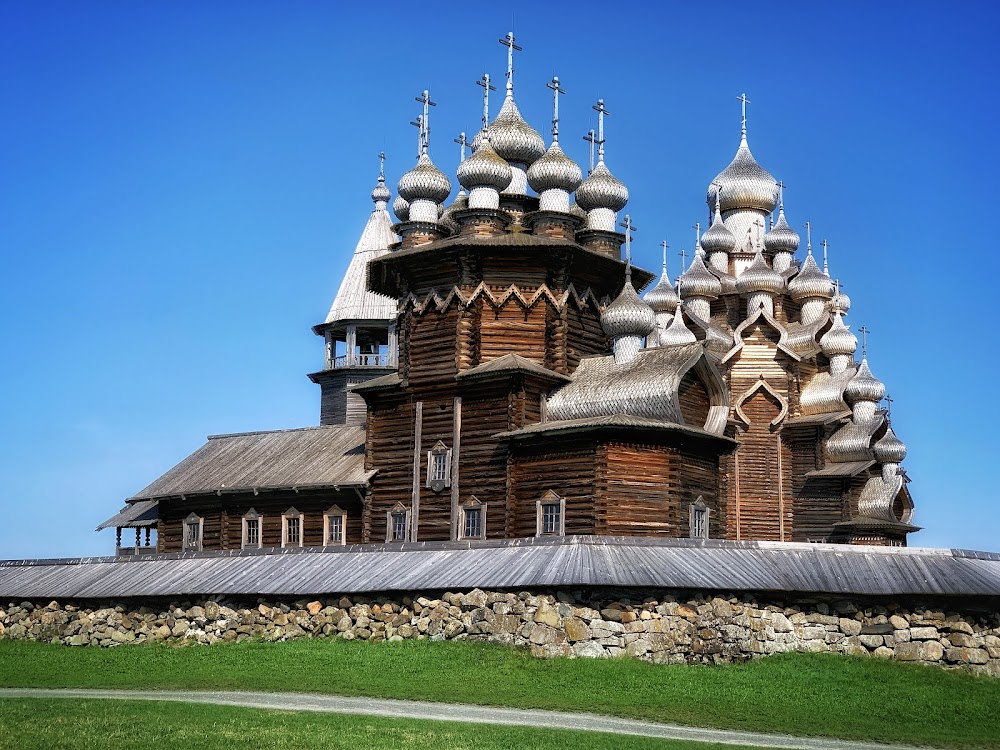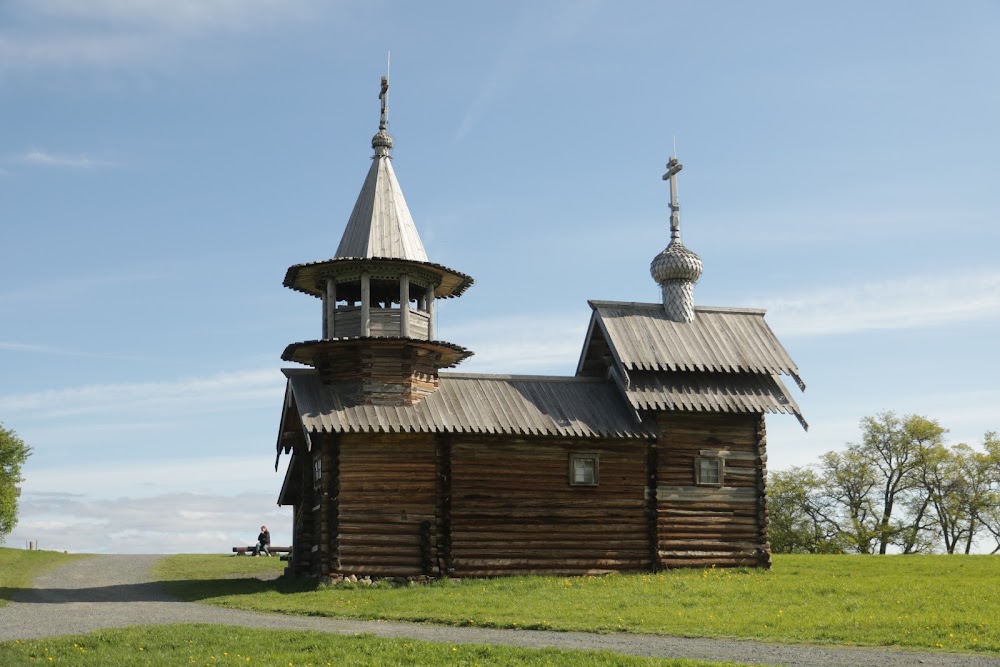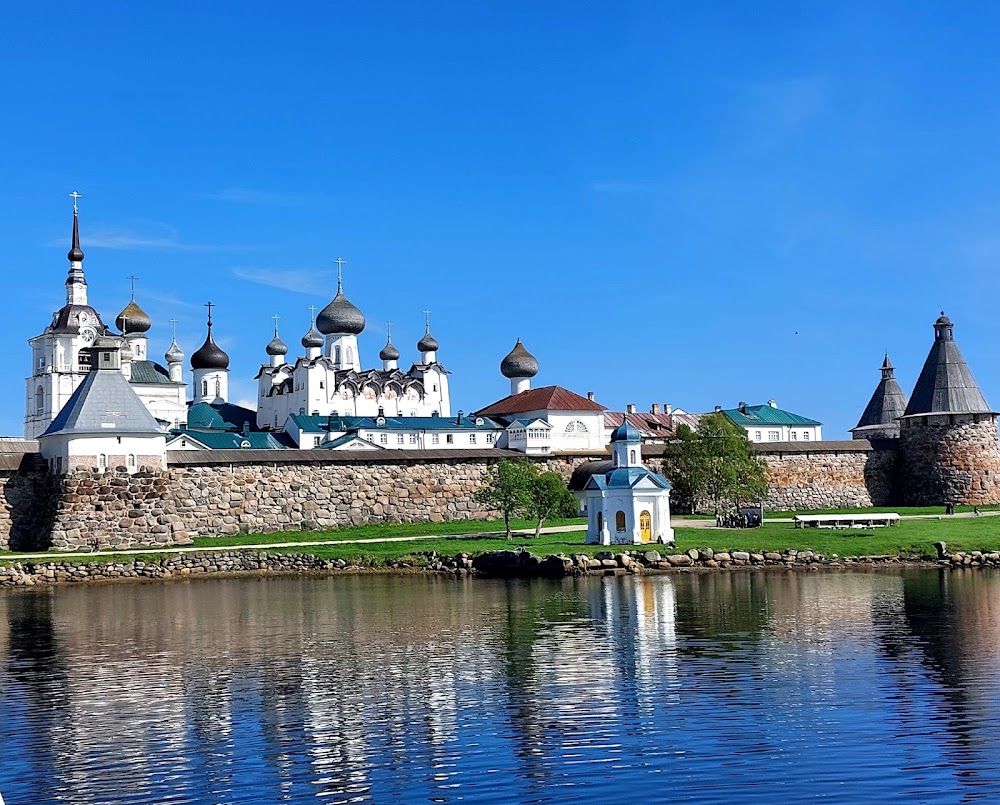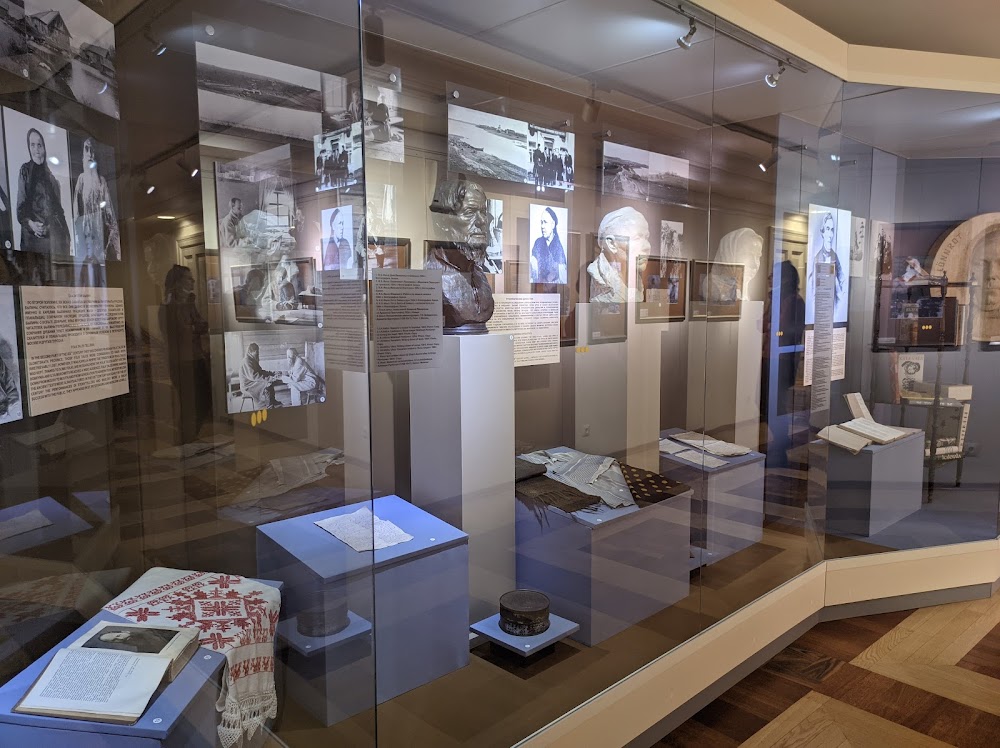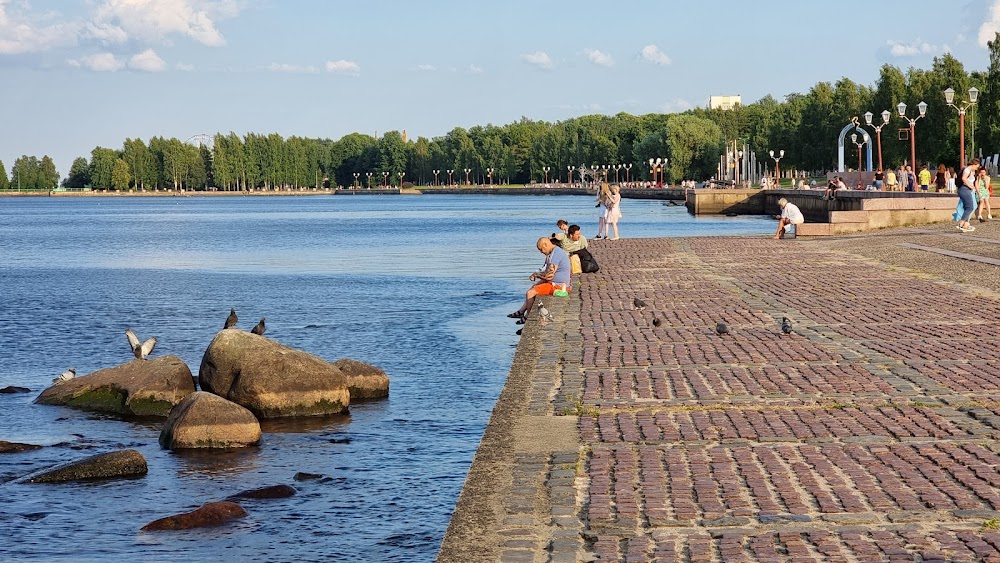Kizhi Pogost (Кижи Погост)
Overview
Kizhi Museum, officially known as Kizhi Pogost, is a captivating open-air museum located on Kizhi Island in the Republic of Karelia, Russia. This remarkable collection of wooden architecture showcases the exceptional skills and traditions of Russian carpenters from centuries past, providing a unique glimpse into the region's cultural heritage.
Architectural Marvels
The centerpiece of Kizhi Pogost is the stunning Church of the Transfiguration, which proudly features 22 magnificent domes. Built in 1714, this wooden structure is a testament to engineering and artistry, constructed entirely without the use of nails. Master Nestor, the chief carpenter, is said to have crafted the church using only one axe, which he famously threw into Lake Onega after declaring that no other building of such grandeur would ever be constructed again.
Adjacent to the Church of the Transfiguration stands the nine-domed Church of the Intercession, dating back to 1764. This winter church was designed with thicker walls and a cozy interior to provide warmth during the harsh Karelian winters. Like its counterpart, it showcases the incredible craftsmanship of local carpenters who employed traditional woodworking techniques to create this architectural gem.
Another significant structure at Kizhi Pogost is the bell tower, built in 1862. This elegant wooden tower complements the two churches and was designed to house a set of bells that called the faithful to worship and marked the passage of time in the community. The intricate woodwork and timber framing on the bell tower reflect the characteristic style of Russian religious architecture.
Wooden Wonders of Karelia
Beyond these primary structures, Kizhi Museum boasts numerous other wooden buildings, including chapels, houses, and mills, that have been carefully transported from various parts of Karelia and reconstructed on the island. A highlight is the Chapel of Archangel Michael, built in 1600 and relocated to Kizhi in the 20th century to preserve its historical and architectural significance.
The construction techniques used at Kizhi Pogost have been passed down through generations of Russian artisans. Each log was meticulously cut and trimmed using axes, with pieces crafted to fit snugly together without modern fasteners. Roofs were often adorned with shingles made from durable aspen wood, chosen for its resistance to the elements. The iconic onion-shaped domes of the Russian Orthodox churches were crafted with great care, typically covered in wooden tiles or sheathed in metal for added protection.
Cultural Heritage and Preservation
Kizhi Pogost is more than just an architectural treasure; it is a living testament to Russia's cultural and spiritual heritage. For centuries, the site has served as a place of pilgrimage, worship, and community gatherings. Today, it continues to attract visitors from around the world, who come to admire the craftsmanship and tranquility of the island.
In 1990, Kizhi Pogost was inscribed as a UNESCO World Heritage Site, recognizing its outstanding universal value as a prime example of traditional wooden architecture and its significance in Russia's cultural history. A dedicated team of historians, conservators, and craftsmen now manages Kizhi Museum, employing modern conservation techniques to protect the buildings from the region's harsh climate, ensuring their preservation for future generations.
Experience Kizhi Pogost
Visiting Kizhi Pogost is like stepping back in time, allowing you to appreciate the simplicity and beauty of wood, along with the ingenuity of the artisans who transformed it into enduring structures. The museum offers guided tours, workshops, and exhibitions that educate visitors about traditional woodworking techniques and the rich cultural history of Karelia.
Kizhi Museum stands as a symbol of the enduring legacy of Russian craftsmanship and the deep spiritual roots of its people. Here, history is not only preserved but brought to life, offering a glimpse into a world where wood was the canvas for extraordinary works of art.


